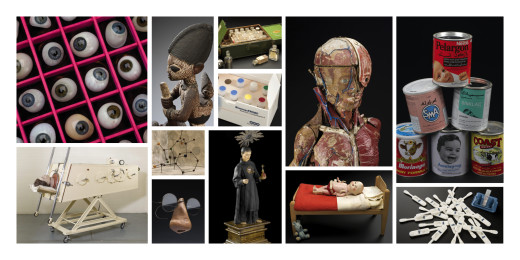10th December 1980 was a big day for the Science Museum. With the opening of a new floor showcasing the history of medicine – Glimpses of Medical History – we changed from a museum of the physical sciences and of technology, to one that also embraced medicine and biomedical research. This gallery provided a visual feast of dioramas and room sets showing medical instruments and techniques in context – from medieval medicine preparation to battlefield surgery.

A year later, on 18th December 1981 another new gallery on another new floor followed. The Science and Art of Medicine displayed a treasure trove of historic objects relating to health and the practice of medicine – from folk remedies to the world’s first stethoscope.
What led us to that point was the 1976 transfer of the extraordinary collection of Sir Henry Wellcome on permanent loan from the Wellcome Trust to the Science Museum. A century earlier, in the 1870s American businessman Henry Wellcome had begun to collect things relating to all aspects of medicine and human health. He found the topic so vast and varied that he could never find its limits. By his death in 1936 he’d amassed so many things that they filled several warehouses and ‘the strangest museum in the world’ – the Wellcome Historical Medical Museum at 54a Wigmore Street, London.

The custodianship of Wellcome’s collection and the creation of the Science Museum’s first galleries devoted to medicine invigorated our collecting in this area. The Science Museum’s medicine collections now contain over 140,000 objects with major acquisitions since 1976 including the Roehampton Collection of prosthetic limbs (see image below), the world’s first MRI scanner and the operating table on which King George VI had lung surgery.

And now a new era beckons.
We are developing major new Medicine Galleries to showcase thousands of objects from our medicine collections for the next generation. Thanks to leadership funding from the Wellcome Trust, the Heritage Lottery Fund and the Wolfson Foundation, these six new galleries will open in 2019, transforming much of the first floor of the Museum and putting the history of medicine and biomedical research at the heart of the Science Museum. In preparation for this major redisplay Glimpses of Medical History and The Science and Art of Medicine will close to the public on Sunday 20th September.

We will be busy conserving many of our objects ready for the new galleries, but while this is happening you’ll still be able to see highlights from the collection in a new exhibition, Journeys Through Medicine: Henry Wellcome’s Legacy, opening on Thursday 1st October. Further items from the collections can also be seen at the Wellcome Collection in Bloomsbury and explored online via our Brought to Life: exploring the history of medicine website.
And if you do feel a pang of nostalgia for the galleries we are closing we’re excited to reveal that our friends at Google have used their Street View technology to capture them for posterity. Later this year you’ll be able to take a virtual tour and explore the objects in more detail when the imagery is live online at the Google Cultural Institute.